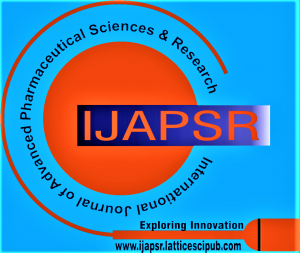![]()
Clinical and Demographic Profile of Syrian Patients with Malignant Glioma: A Six-Month Retrospective Analysis
Rama Ibrahim1, Zein Al-Abideen Douba2, Reema Khaddam3, Haidar Ibrahim4, Bassam Saad5
1Dr. Rama Ibrahim, Department of Biochemistry and Microbiology, Faculty of Pharmacy, Al-Sham Private University (ASPU), Lattakia, Syria.
2Zein Al-Abideen Douba, Department of Biochemistry and Microbiology, Faculty of Pharmacy, Tishreen University, Lattakia, Syria.
3Reema Khaddam, Department of Biochemistry and Microbiology, Faculty of Pharmacy, Al-Sham Private University (ASPU), Lattakia, Syria.
4Haidar Ibrahim, Department of Biochemistry and Microbiology, Faculty of Pharmacy, Al-Sham Private University (ASPU), Lattakia, Syria.
5Dr. Bassam Saad, Department of Oncology, Faculty of Medicine, Tishreen University, Lattakia, Syria.
Manuscript received on 18 September 2024 | Revised Manuscript received on 01 October 2024 | Manuscript Accepted on 15 October 2024 | Manuscript published on 30 October 2024 | PP: 49-57 | Volume-4 Issue-6, October 2024 | Retrieval Number: 100.1/ijapsr.F405604061024 | DOI: 10.54105/ijapsr.F4056.04061024
Open Access | Editorial and Publishing Policies | Cite | Zenodo | OJS | Indexing and Abstracting
© The Authors. Published by Lattice Science Publication (LSP). This is an open-access article under the CC-BY-NC-ND license (http://creativecommons.org/licenses/by-nc-nd/4.0/)
Abstract: This study presents a retrospective analysis of glioblastoma cases admitted to Tishreen University Hospital in Lattakia, Syria, between February and August 2024. The study examines the several potential risk factors including age, sex, genetic predispositions, and lifestyle factors such as smoking and alcohol consumption. It also explores the most commonly encountered tumor grade and the presence of various neurological symptoms, as well as treatment outcomes. A total of 30 glioblastoma were enrolled in this study, 63% of which were males, and the highest age incidence was between 40 and 50 years. Only 6% had a family history of glioblastoma, and 66% of the patients were smokers. Memory disorders, visual impairments, and headaches were common symptoms, with 100% of the patients reporting nausea and vomiting. Glioblastoma diagnosis was primarily established through MRI with contrast (76%), and the predominant treatment modality was surgery combined with radiotherapy and chemotherapy (80%). Post-treatment relapse occurred in 26% of the patients, with a median remission period of four months. These findings provide important insights into the clinical characteristics and treatment outcomes of glioblastoma patients in this region.
Keywords: Glioblastoma, Clinical Characteristics, Neurological Symptoms, Risk factors, Treatment Outcomes.
Scope of the Article: Hospital Pharmacy
